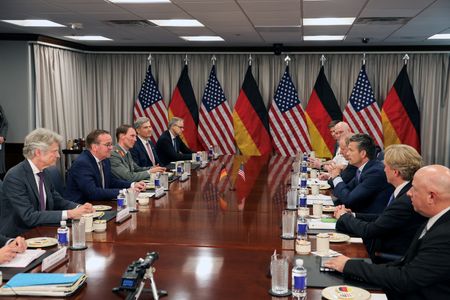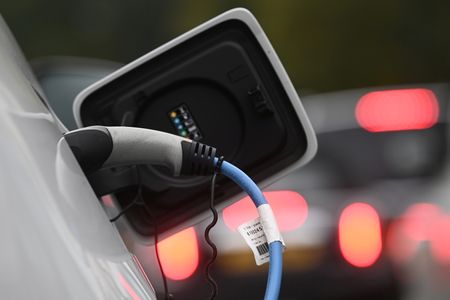By Sabine Siebold
WASHINGTON (Reuters) – Berlin and Washington will take a decision about sending two U.S.-made Patriot air defence systems to Kyiv within days or weeks, German Defence Minister Boris Pistorius said on Monday after talks with U.S. Secretary of Defense Pete Hegseth.
Germany has offered to buy U.S. Patriot units to supply them to Ukraine which has suffered some of the heaviest Russian attacks of the war over the past weeks.
Speaking in Washington, Pistorius said talks would continue at the working level to finalize details, including the number of launchers and missiles that might be included in the agreement.
With a deal in place, the first Patriot unit could be sent to Ukraine within months, he said. He declined to comment on whether the talks also addressed offensive weapons for Kyiv.
Germany has donated three of its own Patriot units to Kyiv, retaining nine systems – much fewer than the 36 Patriot batteries it had at the height of the Cold War.
Pistorius received a warm welcome in Washington, reflecting Germany’s evolving role as a major contributor to NATO’s largest military buildup since the Cold War after being a laggard in defence spending for decades.
As European officials fret over a possible future attack from Russia and brace for a drawdown of U.S. forces, Germany loosened its constitutional debt brake to meet NATO’s new core military spending target of 3.5% of national output by 2029.
The move will boost German defence spending to 162 billion euros ($189 billion) in 2029 from 95 billion euros in the draft budget for 2025.
GERMANY ASKS FOR U.S. TYPHON MISSILE LAUNCHERS
Pistorius said Berlin had sent a letter of request to Washington for the purchase of U.S. Typhon missile launchers, with a decision on whether to place an order to be taken later.
He described the system as a potential stop-gap solution while European partners work to develop their own land-based long-range weapons.
“Together with Great Britain and other partners, we are developing land-based long-range systems, but this will take 7 to 10 years,” Pistorius told reporters. “This is why we need a stop-gap solution.”
Capable of launching missiles with a range of some 2,000 km(1,243 miles), Typhon could bridge the gap between the deployment of U.S. long-range missiles to Germany, scheduled from 2026, until the development of European ground-launched long-range weapons, according to the minister.
Pistorius did not manage to get clarity, however, on whether Washington remains committed to temporarily deploying long-range missiles to Germany from 2026, as agreed under former President Joe Biden.
“I am very confident that last year’s agreement is still valid, but we are still waiting for a final decision,” he noted, adding the deployment was being reviewed at the moment.
The deployment would include systems such as Tomahawk cruise missiles with a range of 1,800 km (1,118 miles) and the developmental hypersonic weapon Dark Eagle with a range of around 3,000 km.
Russia has criticised the plans as a serious threat to its national security and dismissed NATO concerns that it could attack an alliance member.
Another key issue in Pistorius’ talks in Washington was an ongoing review of the U.S. force posture worldwide that could lead to troop cuts in Europe where around 80,000 U.S. soldiers serve, including some 40,000 in Germany.
European allies have been urging Washington to ensure any drawdown is coordinated to prevent capability gaps that might leave NATO members vulnerable to Russian aggression.
Pistorius said Hegseth had agreed to a coordinated and transparent approach should the U.S. actually pull troops from the continent.
($1 = 0.8555 euros)
(Reporting by Sabine Siebold; Editing by Louise Heavens and Sandra Maler)















